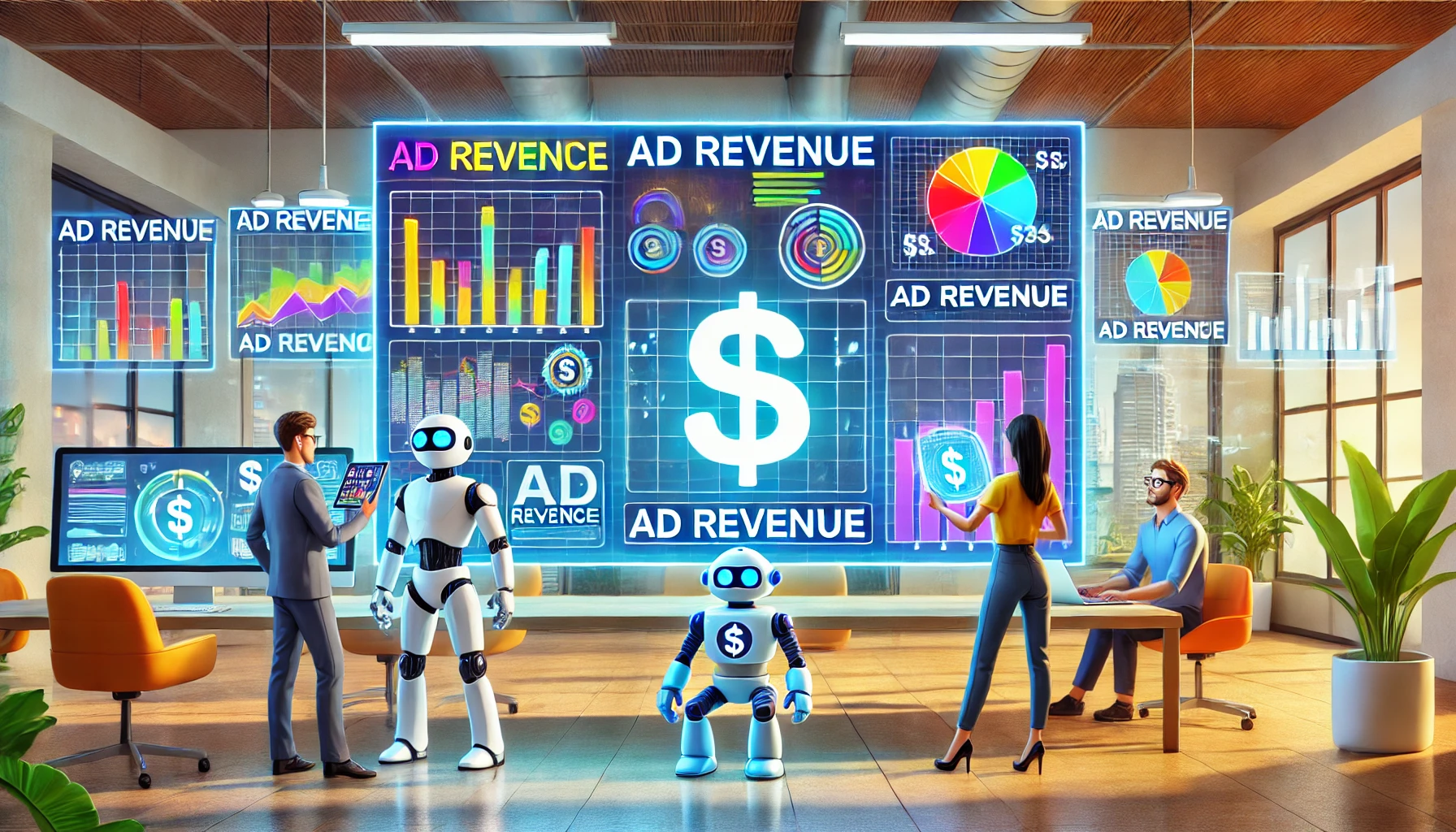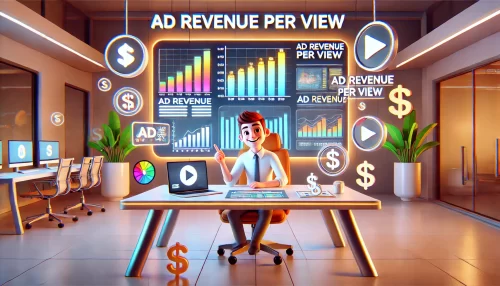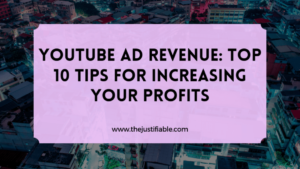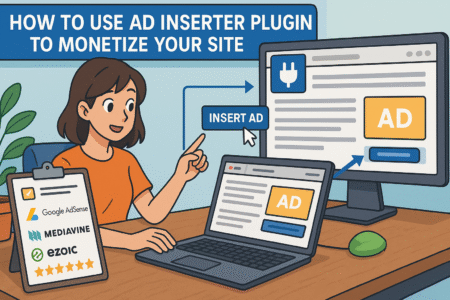Table of Contents
Have you ever wondered, how does ad revenue benefit consumers? Ads are often seen as interruptions, but they play a pivotal role in shaping the consumer experience. From funding free services to enabling innovative technology, ad revenue benefits consumers in surprising ways.
In this article, we will explore five compelling reasons why ad revenue positively impacts consumers, unraveling its hidden advantages.
1. Ad Revenue Funds Free Digital Services Consumers Enjoy
Ad revenue plays a crucial role in ensuring that consumers have access to free digital services. Many platforms rely on this revenue stream to provide high-quality experiences without charging users directly, making technology accessible to everyone.
Streaming Platforms Offering Free Ad-Supported Content
Streaming platforms are a fantastic example of ad revenue in action. Many offer free tiers that allow viewers to enjoy their favorite shows and movies. These ads help the platforms thrive while keeping consumers entertained at no cost.
Streaming services like Pluto TV and Tubi thrive on ad-supported models. I’ve noticed that users can watch top-tier content without worrying about monthly fees. This setup benefits both consumers and advertisers, bridging their needs efficiently.
Some platforms even allow users to interact with ads, which I think creates an engaging experience. For instance, an ad might include polls or clickable offers that keep consumers engaged while introducing them to new products or services.
I also recommend exploring these free options before committing to paid subscriptions. You’ll discover there’s a wealth of content available that rivals premium platforms, proving that ads are more than just interruptions—they’re enablers of convenience.
What stands out is how these platforms balance ads with quality. They aim to make the viewing experience smooth while delivering value through minimal interruptions, proving that ad revenue genuinely benefits consumers.
Free Social Media Access Through Ad-Supported Models
Social media is accessible to billions, thanks to ad revenue. Popular platforms use advertisements to fund operations, ensuring users can connect, share, and discover without paying a single cent for access.
I believe this model fosters inclusivity. It allows individuals from all walks of life to join global conversations, share their stories, and connect with communities without financial barriers. Ads are a small tradeoff for such a significant benefit.
Even better, these ads often cater to users’ interests. For example, I’ve seen how targeted ads on platforms like Instagram promote products or services I might genuinely need. It’s a win-win for consumers and advertisers.
I advise looking at these ads as enhancements rather than distractions. They introduce us to trends, deals, and even local services we might not have discovered otherwise. Social media becomes a hub for information, thanks to ads.
This approach keeps platforms vibrant and innovative. With steady revenue from advertisers, these platforms can invest in features like video reels, live streaming, and advanced filters—all for free.
Email Services Sustained by Advertising Revenue
Free email services, like Gmail and Yahoo, are powered by ads. Without ad revenue, these services might require subscriptions, drastically limiting accessibility for consumers worldwide.
I’ve often noticed how seamlessly these platforms integrate ads into the user experience. For instance, sponsored promotions appear subtly in the inbox, never interrupting essential tasks. This balance makes email services both efficient and free.
Ad-driven email providers offer robust features like large storage and advanced spam filtering. I suggest consumers embrace these free benefits as proof that advertising sustains vital tools we rely on daily.
For professionals, free email services are indispensable. I’ve seen how startups and freelancers leverage these platforms to communicate effectively without needing expensive software. Advertising makes this possible.
I also believe that ad-supported email models encourage continuous upgrades. Providers can invest in features like AI-driven organization, ensuring consumers get cutting-edge services without additional costs.
Gaming Apps and Tools Accessible Without Subscription Fees
Gaming apps are an excellent example of ad-supported services. Countless games are free to download, funded entirely by ads that keep developers afloat while entertaining users.
I’ve seen players enjoy full-fledged gaming experiences, from puzzles to role-playing adventures, without spending a dime. Ads displayed between levels or for rewards keep these games accessible to everyone.
Reward-based ads are especially consumer-friendly. I recommend engaging with them in games—watching a quick video to earn extra lives or bonuses feels like a fair exchange for hours of fun.
Developers, fueled by ad revenue, constantly update their games. This ensures users get fresh content, bug fixes, and exciting new levels, all without paying subscription fees.
This model empowers gamers globally. I’ve noticed how kids and adults alike can access entertaining, educational, and innovative games, proving ad revenue’s role in democratizing gaming.
2. Ad Revenue Enables Lower Costs for Consumer Products

Ad revenue significantly reduces costs for consumer products, allowing brands to offer discounts and accessible pricing. These savings are often passed on to consumers, making it easier to purchase quality goods without breaking the bank.
Discounted Products Through Advertising Partnerships
Many brands lower prices through advertising deals. Collaborating with ad platforms allows companies to offset costs, ensuring consumers get affordable options.
I’ve often found excellent deals, like buy-one-get-one offers or bulk discounts, promoted through ads. These partnerships make it easier for families to manage budgets without sacrificing quality.
Advertising also introduces lesser-known brands to consumers. I suggest exploring these options when ads pop up—they often provide unique, cost-effective alternatives to mainstream products.
Ads also drive seasonal discounts, which I believe are a boon for shoppers. From holiday sales to back-to-school deals, advertisements make it easier to find the right products at the right time.
I’ve noticed that these partnerships also create competition among brands, encouraging them to offer more value. This competitive spirit benefits consumers, who enjoy lower prices and better choices.
Affordable Entertainment Options Supported by Ads
Movies, music, and more are available at lower costs due to ad-supported models. Platforms can offer reduced subscription fees or free access, all funded by advertising revenue.
I recommend trying these ad-supported services to enjoy high-quality entertainment without stretching your budget. They often rival premium subscriptions in content variety and user experience.
For example, platforms like Spotify let users stream millions of songs for free, with occasional ads. I find this tradeoff worth it, especially for casual listeners who don’t need ad-free experiences.
Even in movie streaming, ads help consumers save. Platforms provide free access to classic and contemporary films, funded entirely by advertisers eager to connect with audiences.
This model also benefits creators, ensuring fair compensation for their work. By choosing ad-supported services, I believe consumers contribute to a sustainable entertainment ecosystem.
Cost-Efficient Mobile Apps Thanks to Ad Revenue Models
Many mobile apps remain free or affordable due to ad revenue. These apps, from productivity tools to learning platforms, rely on ads to deliver value-packed services.
I’ve seen how apps offer premium features for free, requiring users to watch ads for access. This lets consumers enjoy advanced tools without subscriptions, which I think is fantastic.
Educational apps are a standout example. Kids can learn languages, math, or coding without expensive courses. I recommend parents explore these apps as ad revenue keeps education accessible.
Developers are also motivated to innovate within this framework. Regular updates, bug fixes, and user-friendly features keep these apps relevant, proving the impact of ad revenue.
Ads also allow small businesses to compete in the app market. I find that many niche apps wouldn’t exist without this support, making ad revenue essential for diversity.
Coupons and Promotional Discounts Backed by Ad Campaigns
Ad campaigns are a significant driver of coupons and promotional discounts, saving consumers money across various industries.
I’ve personally saved a lot by exploring these ads—they often highlight deals I wouldn’t have discovered otherwise, from groceries to tech gadgets.
Retailers use ads to promote limited-time offers. I suggest keeping an eye out for these campaigns, especially during holiday seasons, when brands ramp up discounts to attract customers.
Even local businesses benefit from ad-driven promotions. I’ve found restaurants, salons, and stores offering incredible deals through ads that keep consumers in the loop.
These discounts make premium products more accessible. Ad campaigns bridge the gap between affordability and quality, ensuring consumers enjoy the best of both worlds.
3. Personalized Experiences Enhance Consumer Satisfaction

Ad revenue doesn’t just fund services—it also improves how these services cater to individual needs. Consumers benefit from highly tailored experiences, where ads provide meaningful recommendations and insights, enhancing overall satisfaction while connecting them with products and services they love.
Ad Revenue Drives Personalized Product Recommendations
Ad revenue fuels algorithms that generate personalized product recommendations. This process ensures consumers are introduced to products matching their preferences, creating a shopping experience that feels intuitive, efficient, and tailored specifically for their unique tastes and needs.
For instance, when I shop online, I notice how platforms suggest items I didn’t know I wanted. These recommendations often feel spot-on, saving time and helping me discover products that genuinely add value to my life.
I believe that this personalization benefits everyone. Instead of endless scrolling, consumers quickly find options aligned with their interests, whether it’s a gadget, a book, or even a recipe for dinner.
This system also supports small businesses. Ads connecting niche products to the right audiences help these brands thrive while providing consumers with more diverse and specialized options.
If you’re exploring new hobbies or trends, I suggest paying attention to these recommendations. They’re often backed by advanced insights, showcasing products you might not have encountered otherwise.
Search Engines Tailored to User Needs with Ad Insights
Search engines use ad revenue to refine how they serve users. Advertisers help fund tools and features that make searching more efficient, ensuring consumers receive accurate, relevant results aligned with their queries and interests.
For example, I’ve noticed that sponsored results often highlight exactly what I’m looking for. Whether it’s local services or niche products, ads provide direct pathways to solutions, saving both time and effort.
I advise exploring these results rather than ignoring them. Sponsored listings can offer insights into trends or services you hadn’t considered, enriching your overall search experience in meaningful ways.
This tailored approach also improves search engine innovations. Enhanced filtering options, voice search, and visual searches are all supported through ad revenue, making these platforms indispensable tools for daily life.
Ad-funded insights even help address broader consumer needs. From planning vacations to finding healthcare providers, these personalized features simplify decision-making for users everywhere.
Customized News Feeds and Articles Delivered Through Ads
Ad revenue supports news platforms, enabling them to curate feeds based on consumer preferences. This customization ensures that users receive articles and updates relevant to their interests, making news consumption a more engaging and meaningful experience.
I’ve often found this feature invaluable. When browsing news apps, I see updates on topics I care about—whether it’s health, tech, or entertainment—without wading through irrelevant content.
For those exploring unfamiliar topics, these curated feeds act as a guide. I suggest letting the algorithms work for you, delivering information that broadens knowledge while keeping it personally engaging.
These platforms also connect users to emerging stories and trends. I’ve discovered insightful articles I might have missed, proving that targeted ads can enhance our understanding of the world.
Beyond information, ad revenue ensures these services remain free. News outlets can invest in quality journalism while maintaining accessibility, creating a win-win situation for both consumers and publishers.
Streaming Platforms Optimizing Content Suggestions
Streaming platforms use ad revenue to refine their algorithms, delivering content recommendations that match user preferences. This ensures viewers enjoy seamless, personalized entertainment experiences tailored to their unique tastes.
I’ve noticed how platforms like Hulu and YouTube suggest shows and videos aligned with what I love watching. This feature saves time and keeps me engaged, proving how ad-funded personalization can elevate the user experience.
Consumers also benefit from niche discoveries. I advise exploring suggested content—it’s often curated to surprise and delight, introducing you to hidden gems you wouldn’t have found otherwise.
This personalized approach is continuously improving. Ad revenue enables platforms to invest in better algorithms and data analysis, ensuring their recommendations remain fresh and exciting.
For families or shared accounts, these features cater to everyone’s needs. With ad-supported recommendations, every user enjoys content tailored to their interests, making these platforms a favorite for all ages.
4. Encourages Innovation Across Consumer Industries

Ad revenue is a driving force behind industry innovations, funding advancements that directly benefit consumers. It enables businesses to develop creative solutions, enhance existing products, and explore new ideas that make everyday experiences more enjoyable and accessible.
Funding Technological Advancements for Consumer Benefits
Ad revenue supports technological breakthroughs that improve consumer lives. From cutting-edge gadgets to smarter software, advertisers provide the financial backing needed to fuel innovation, bringing advanced solutions to market faster and more affordably.
I’ve seen how this impacts industries like healthcare and education. Think about wearable health trackers that monitor vitals or virtual classrooms enabling remote learning—these innovations wouldn’t be possible without ad-funded investments in technology.
For everyday users, this means more options. I believe that the rise of ad-supported apps and devices ensures consumers gain access to high-tech tools without paying premium prices, making technology accessible to more people.
This funding also helps technology evolve quickly. Companies are motivated to stay ahead, delivering updates and enhancements that keep products relevant and effective. Consumers benefit from ongoing improvements at no extra cost.
I suggest embracing ad-driven technology—it often represents the best of what industries have to offer while ensuring affordability for everyone.
Supporting Creative Content Creation in Entertainment
Entertainment thrives on ad revenue, which fuels the production of diverse, high-quality content. Advertisers help fund movies, music, and more, allowing creators to push boundaries and bring fresh ideas to audiences worldwide.
I’ve noticed how this model fosters originality. Streaming platforms, for example, produce exclusive shows supported by ads, showcasing content that appeals to niche tastes while keeping it free or low-cost for viewers.
Musicians and artists also benefit. Ad-supported platforms like YouTube allow creators to share their work widely while earning revenue. This model empowers both established and emerging talent, creating a vibrant entertainment landscape.
I believe that ad-driven entertainment ensures variety. From indie films to global blockbusters, ad revenue makes it possible for creators to take risks and innovate without relying solely on traditional funding sources.
Consumers, in turn, enjoy more choices. Whether you’re into documentaries, comedies, or experimental music, ad-supported content ensures there’s something for everyone.
Financing Research in Consumer-Oriented Fields
Research that directly benefits consumers often relies on ad revenue. From scientific studies to consumer behavior analysis, advertisers provide the funding needed to drive discoveries that improve everyday products and services.
I’ve seen this play out in areas like sustainability. Brands invest in research to develop eco-friendly packaging or energy-efficient devices, motivated partly by the desire to align with consumer preferences revealed through ads.
Health research is another beneficiary. Ad-funded campaigns often support studies that lead to better medicines or wellness programs, ensuring consumers gain access to improved healthcare options.
I believe this model creates a positive cycle. Advertisers support research that benefits consumers, who then respond positively to brands delivering innovative, meaningful solutions. It’s a win-win scenario.
Even seemingly small improvements, like ergonomically designed chairs or smarter kitchen appliances, result from this research. Ad revenue keeps the wheels of progress turning for consumer-focused innovation.
Empowering Startups to Deliver Affordable Solutions
Ad revenue gives startups the resources to grow, innovate, and compete. This funding allows emerging businesses to focus on creating affordable solutions that address consumer needs effectively, often disrupting established markets.
I’ve noticed how startups in areas like fintech and e-commerce thrive through ad-driven exposure. Ads help them reach potential customers while generating the revenue needed to improve their offerings.
This funding model also lowers barriers for entrepreneurs. I believe that many small businesses wouldn’t survive without ad revenue, which enables them to test ideas and scale operations without relying on costly loans.
Consumers benefit too. Startups often prioritize affordability, delivering high-quality products and services at competitive prices. This ensures greater access to innovations for all income levels.
If you’re exploring new brands, I suggest giving startups a chance. Their success, powered by ad revenue, often translates into products that combine creativity, value, and quality.
5. Increases Awareness of Valuable Consumer Opportunities
Ad revenue plays a pivotal role in connecting consumers with opportunities they might otherwise miss. Through informative and engaging advertisements, brands share valuable insights, helping people discover new products, services, and experiences tailored to their needs.
Education Through Informative and Helpful Advertisements
Advertisements educate consumers by delivering valuable insights. From tutorials to product demonstrations, ads simplify complex topics, ensuring users understand how to make the most of what’s available.
I’ve learned a lot from well-crafted ads—like tips for using gadgets or finding eco-friendly solutions. These educational moments turn ads into resources that improve how we approach everyday challenges.
Ads also demystify trends. I suggest paying attention to these messages; they often explain new technologies, such as electric vehicles or smart home devices, in ways that are accessible and easy to grasp.
For parents, educational ads can be a game-changer. They highlight tools and resources, such as learning apps or study aids, that enhance children’s development while staying budget-friendly.
Brands that focus on informative advertising build trust. I believe this approach benefits consumers, creating a sense of empowerment and confidence in their choices.
Promotion of Public Welfare Campaigns via Ads
Public welfare campaigns funded by ads raise awareness about critical issues, encouraging positive actions. From health initiatives to environmental drives, these ads inspire change while equipping consumers with the tools to contribute meaningfully.
I’ve seen impactful campaigns that promote recycling, blood donation, or healthy eating. These ads don’t just inform—they motivate individuals to take steps that benefit society as a whole.
Brands often collaborate with nonprofits on these initiatives. I believe these partnerships amplify the reach and effectiveness of campaigns, making a tangible difference in local and global communities.
Consumers also gain access to practical resources through these campaigns. Whether it’s finding nearby vaccination centers or learning water conservation tips, ad-driven messages provide actionable advice.
I recommend engaging with these campaigns—they highlight opportunities to make a positive impact while connecting with causes that resonate personally.
Awareness of Niche Products Meeting Specific Needs
Ad revenue allows brands to promote niche products, ensuring consumers discover items tailored to unique preferences or challenges. These ads connect people with solutions they didn’t know existed.
I’ve found niche ads helpful for exploring specialized products, such as ergonomic furniture or dietary supplements. They often introduce innovations that solve problems in ways mainstream options can’t.
For individuals with specific needs, such as gluten-free foods or adaptive clothing, targeted ads make the search easier. I suggest embracing this personalized approach—it ensures you find products designed just for you.
These ads also support small businesses offering unique goods. I believe this model benefits both consumers and entrepreneurs, fostering a diverse marketplace where everyone can find exactly what they need.
If you’re looking for something unusual or specialized, niche ads often hold the answer. Their focus on tailored solutions enhances convenience and satisfaction.
Highlighting Sales, Deals, and Events Benefiting Consumers
Ads play a vital role in showcasing discounts, promotions, and events. They help consumers find the best deals, ensuring they save money while making informed purchasing decisions.
I’ve saved a lot thanks to ad-driven promotions. From seasonal sales to exclusive online discounts, these ads make it easy to access great offers without extensive searching.
Events like product launches or local markets also gain visibility through advertising. I believe these ads build excitement while giving consumers opportunities to explore new experiences and products.
For budget-conscious shoppers, ads act as guides. I recommend keeping an eye out—they often reveal hidden gems that align perfectly with your needs and budget.
This strategy benefits consumers and brands alike. Businesses attract more customers, while individuals enjoy savings and access to exciting opportunities.






